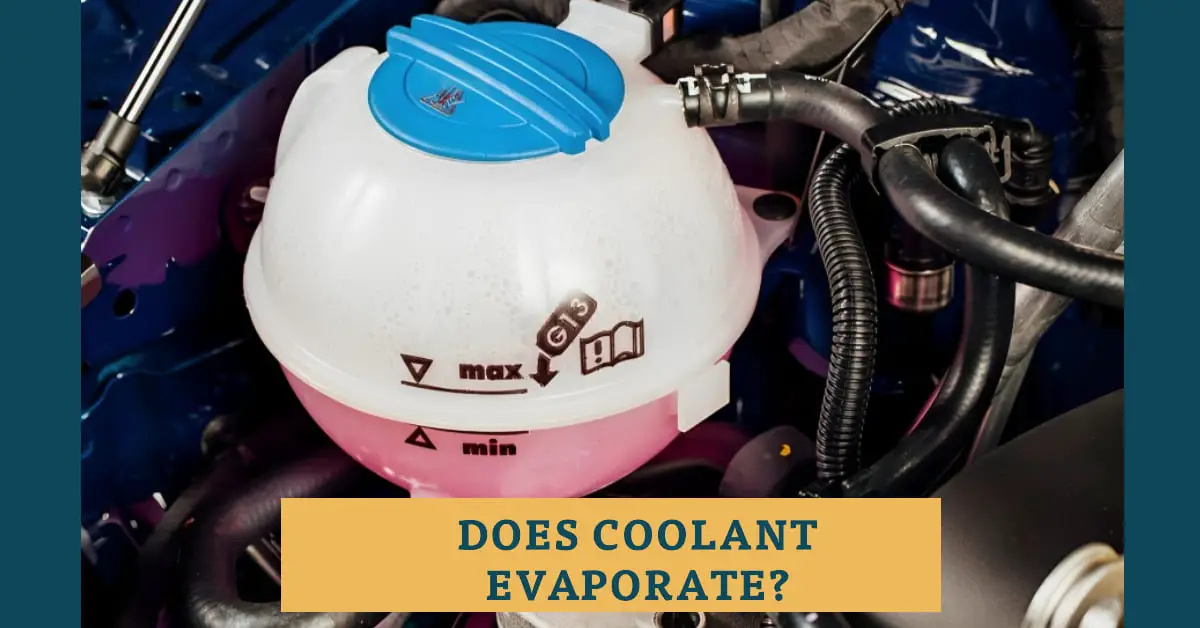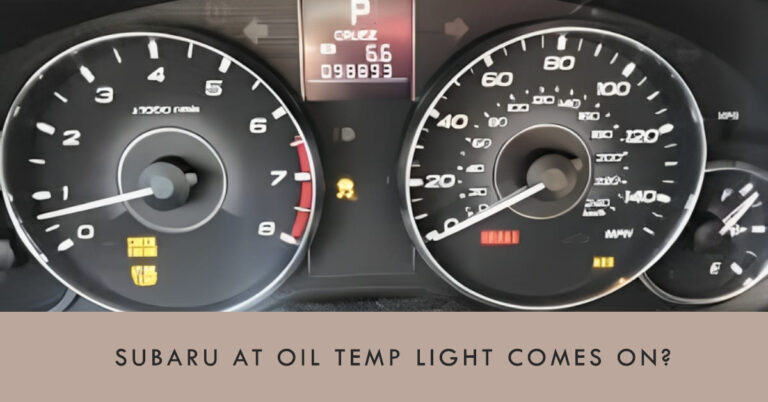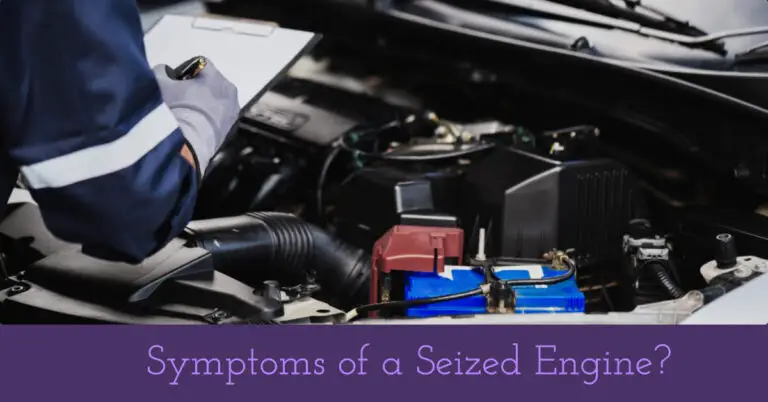Does Coolant Evaporate? What Causes That Annoying Coolant Loss

Driving down the highway on a hot summer day, cranking the A/C in a fruitless attempt to stay cool. You’re keeping an eye on the temperature gauge just in case when suddenly it starts creeping up. A few miles later, smoke begins billowing from under the hood and the dreaded coolant light pops on. Uh oh, time to pull over before the engine overheats!
But what caused your cooling system to fail and start losing that precious coolant? Can coolant really evaporate enough to cause problems?
In short, yes – coolant absolutely can and does evaporate over time leading to declining levels. Like an insubordinate toddler, it can disappear when you’re not looking and cause all sorts of chaos as a result.
This post will cover everything you need to know about how and why coolant evaporates, how to spot the symptoms of low coolant, and most importantly, tips to stop so much of it from vanishing into thin air. Nothing spoils a nice drive like an overheating engine, so let’s learn how to prevent that!
Table of Contents
What is Engine Coolant Anyway?
Before jumping into why coolant levels drop, it helps to understand what exactly engine coolant (also known as antifreeze) does:
- Its primary job is to regulate engine temperature. The liquid coolant absorbs excess heat from the engine and carries it to the radiator to be dispersed.
- It flows in a closed loop system between the engine block, radiator, heater core, hoses, water pump, and other components.
- Coolant is typically a 50/50 mixture of water and ethylene glycol antifreeze. The antifreeze helps it resist freezing in winter and boiling in summer.
- Many coolants also contain rust inhibitors and other additives to prolong the life of the cooling system. Prestone says their antifreeze protects for up to 5 years or 150,000 miles.
So in summary, coolant plays a vital role in keeping your engine at the proper operating temperature. Now let’s look at why it seems to disappear at the most inconvenient times.
Does Coolant Actually Evaporate?
The short answer is yes, coolant can and does slowly evaporate over time. The water content in particular can evaporate leading to declining coolant levels. There are a few reasons why it happens:
Normal Evaporation
Even a perfectly sealed, leak-free cooling system will lose some fluid over tens of thousands of miles of driving. As the water-based coolant continuously circulates, a bit of the water will inevitably escape as vapor through the radiator cap and overflow reservoir.
Normal evaporation through seals, gaskets and overflow tanks is usually very gradual – we’re talking a low level over a year or two, not a major loss. But it still adds up over the lifespan of a vehicle.
External Leaks
More dangerous than normal evaporation are external leaks from damaged hoses, a bad radiator cap, failed water pump gasket, or leaks around the thermostat housing. These allow coolant to escape at a much faster rate.
Catching and repairing minor leaks early is crucial before they become major. Neglecting seeping hoses or worn gaskets allows rapid coolant loss leading to overheating.
Internal Leaks
In severe cases, coolant can leak past compromised cylinder head gaskets or cracked engine blocks into the combustion chambers. This type of internal leak quickly depletes coolant while also contaminating engine oil and raising exhaust hydrocarbon emissions.
Boilovers from Overheating
Here’s a common scenario: An existing coolant leak causes low levels. Low coolant allows the engine to overheat. The overheated coolant expands, builds pressure, and boils over out the radiator cap or overflow tank.
This sudden boilover episode rapidly depletes whatever coolant remained. It’s a cascading failure – once one leak occurs, it can quickly snowball into a major loss of coolant.
What are the Symptoms of Low Coolant?
Letting coolant levels drop too low can lead to catastrophic overheating damage and expensive repairs. That’s why it’s crucial to watch for these warning signs of insufficient antifreeze:
- Overheating engine – Low coolant reduces its ability to regulate temperature. The gauge may show it running hotter than normal.
- Check Coolant warning light – Many cars have a dedicated sensor that triggers this light when coolant is critically low.
- White exhaust smoke – This results from coolant leaking into cylinders and being burned along with fuel.
- Sweet, sickly coolant smell – Leaking antifreeze has a distinct saccharine odor. You may notice it inside or outside the car.
- Low coolant reservoir level – Visibly check the see-through plastic reservoir – if it’s low the radiator likely needs a top-up.
- Overheat-related car problems – Low coolant can lead to trouble starting, accelerator lag, or odd engine noises if overheating damage occurs.
Catching low fluid early gives you a chance to top up the system, find any leaks, and hopefully prevent the situation from escalating into major repairs.
How Can You Prevent Coolant From Evaporating?
While some gradual coolant loss through evaporation or minor seepage is inevitable in an older, high-mileage engine, you’re not entirely powerless against its disappearing act. Here are some tips to minimize evaporative coolant loss:
Regularly Check Coolant Level
- Make it part of your monthly maintenance routine to pop the hood and visually inspect the plastic coolant reservoir.
- The level should be between the “Full” and “Add” lines. If it’s low, carefully top it up according to your owner’s manual.
- Use a 50/50 premixed antifreeze like Prestone rather than pure water to maintain the correct antifreeze concentration.
Scan for Leaks
- When adding coolant, take a few minutes to inspect the engine bay for any obvious leaks.
- Look for dripping hoses, damp spots on the block, or crusty dried coolant around gaskets and weep holes.
- Repair identified leaks promptly before they worsen.
Flush the System
- Old, deteriorated coolant loses effectiveness. Drain and flush the system every 2 years.
- This removes contaminants and deposits that can block coolant flow and accelerate corrosion.
- Refill with fresh, pre-mixed coolant after flushing.
Drive Carefully
- Aggressive driving and hauling heavy loads causes more extreme engine heat.
- Sticking to reasonable speeds and acceleration helps avoid overstressing the cooling system.
- Overheating episodes can result in coolant boilover and rapid loss. Go easy on a hot engine.
Address Overheating Issues
- If your engine has a history of running hot, have the cooling system inspected for problems.
- A faulty thermostat, water pump, or clogged radiator can make overheating more likely.
- Repair any issues to help prevent boilover events.
With some diligence about maintenance and leak prevention, you can minimize evaporative coolant loss. Topping up when needed and repairing seeps quickly keeps the system full, ensuring it can properly regulate temperature.
Letting coolant get too low risks overheating damage, so keep an eye on the reservoir level and your temperature gauge. A few simple precautions will help keep your engine running cool and prevent being stranded with an overheated motor.
Stay cool! And if you do see that dreaded check engine light, pull over and call for help quickly to prevent exacerbating the issue. No one wants to deal with a cooked cylinder head!
Conclusion
While a bit of normal evaporation over tens of thousands of miles is expected, excessive coolant loss can quickly lead to engine overheating and damage. By watching for leaks, topping up low coolant, flushing the system regularly, and avoiding aggressive driving, motorists can minimize evaporative loss.
Catching low fluid levels early and addressing any identified seeps promptly is crucial to preserve the cooling system’s ability to regulate temperature. With some attentive maintenance and prompt leak repairs, your coolant levels should hold steady for years of trouble-free driving.







